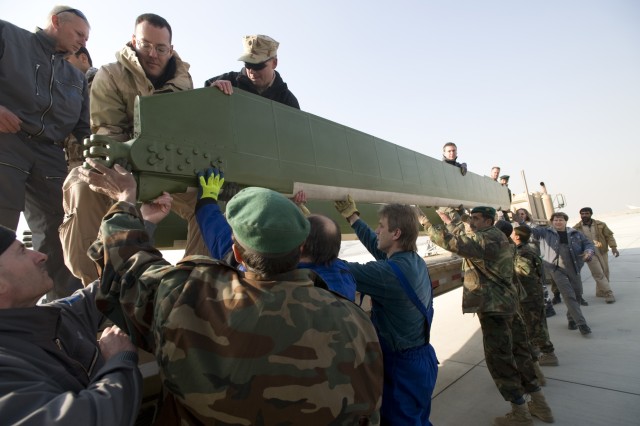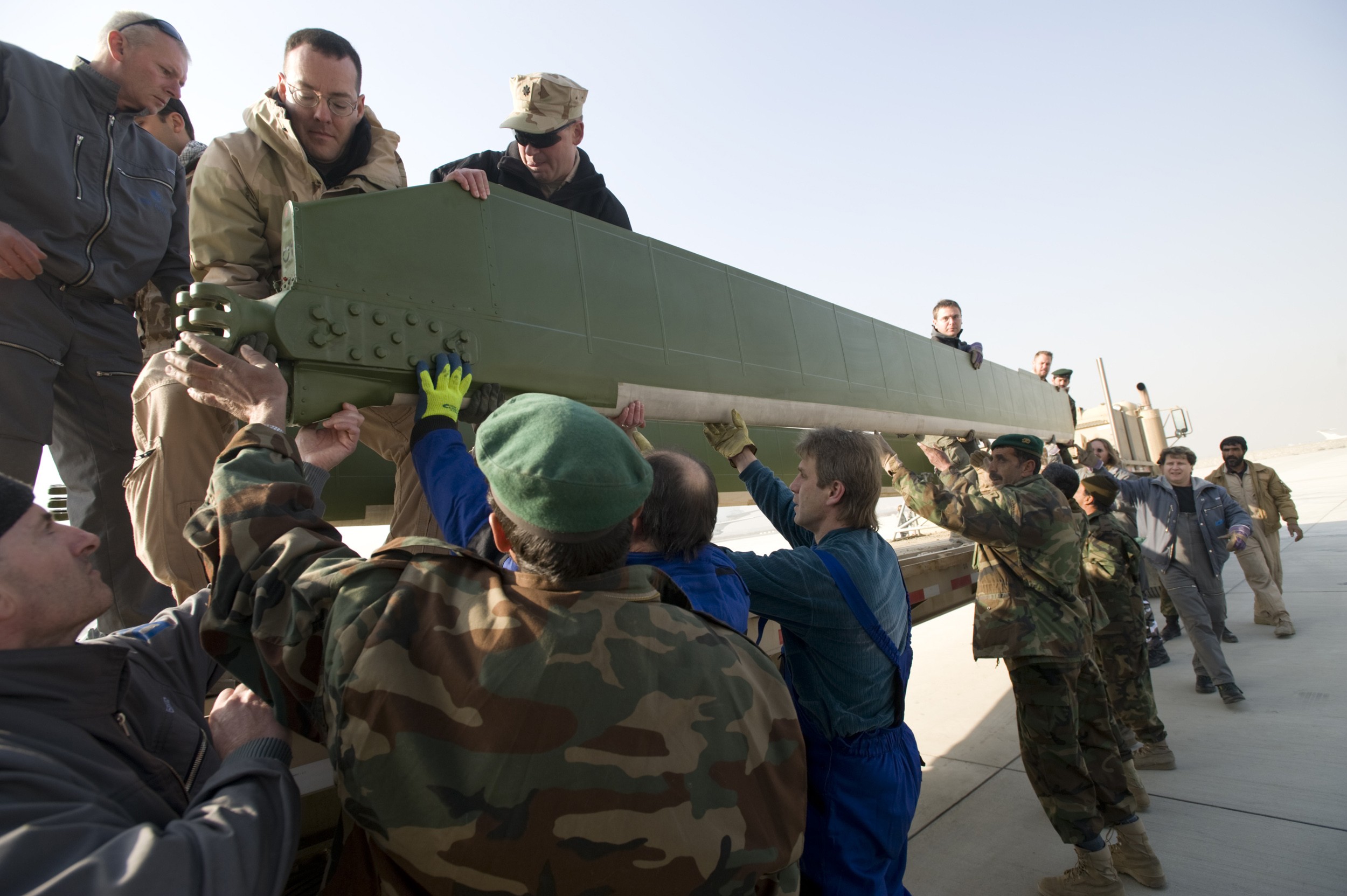KABUL, Afghanistan, Dec. 18, 2008 - The Afghan National Army Air Corps has received the first three of six Mil Mi-35 attack helicopters, adding to its growing capabilities.
The helicopters, donated by the Czech Republic, were refurbished by members of Combined Security Transition Command Afghanistan.
The Afghan air corps provides trained and ready airmen and soldiers to execute critical air support to the Afghan National Army. When directed by the Afghan Defense Ministry, the corps also supports Afghan civil authorities at all levels.
"Air power is extremely important in this operational environment that we are in right now," said Air Force Col. Dan Miller, vice commander of the Combined Air Power Transition Force and the 438th Air Expeditionary Wing. "It makes sense because of these rocky mountains, the lack of good roads or railroads, the forbidding terrain that covers much of the country and the threat of [improvised explosive devices], that you should fly."
Ten months ago, NATO allies flew 90 percent of the missions in support of the Afghans. Today, Afghans fly 90 percent of their own missions as a result of air corps development.
The Combined Air Power Transition Force, in coordination with the Afghan Defense Ministry and the air corps, is helping to build the Afghan air corps by recertifying trained Afghan pilots and using refurbished Soviet aircraft that are familiar platforms to Afghan pilots and crews, officials said.
"Right now, the ANAAC has 34 planes. Back in 2007, when we stood up, there were only 13," Miller said. "This task force is to build this air corps up, and we have a campaign plan that takes us out until 2016. We're building air power, organizing training equipment, simultaneously building their command and control, and we're also building bases, infrastructure and simple things we take for granted in our military.
"We are doing this simultaneously while this war is going on so we can walk away knowing they are fully independent and operationally capable," he continued.
With more than 300 pilots of fixed- and rotary-wing aircraft, the corps has contributed to the fight, setting records this summer with more than 220,000 pounds of cargo and nearly 10,000 personnel transported, officials said. In the next seven years, Combined Air Power Transition Force officials plan to strengthen the air corps from 2,000 personnel to more than 7,000, teaching and training them to counter insurgencies and putting the Afghans in the lead.
The corps will receive 61 Mi-17V5 helicopters in the future, Miller said, adding that the V5 model is able to haul more troops and cargo, and air corps pilots already know how to fly the aircraft.
Combined Security Transition Command Afghanistan servicemembers also train maintenance personnel, with more than 300 students trained to date, officials said. After 16 weeks of training at the Kabul Military Training Center, they attend the Kabul Air Corp Training Center, an aviation branch school for the air corps. They train in basic air corps orientation and development of specific skill sets.
"Although the effort started rather late, it's very gratifying to see the efforts of CSTC-A and CAPTF featured in the growing capability of the ANAAC," Air Force Brig. Gen. Joshua Givhan, commander of the 438th Air Expeditionary Wing, said. "It's a Phoenix risen from the ashes."
That Phoenix soon will support the entire Afghan theater, Miller noted.
"The Kabul Air Wing will eventually house approximately 3,500 personnel, and the Kandahar Air Wing will house nearly 2,500 when the ANAAC matures to its 7,000 strong," Miller said. "And then there will be a mix of three regional support squadrons and two detachments, which will support all of Afghanistan."
(From a U.S. Forces Afghanistan news release.)


Social Sharing